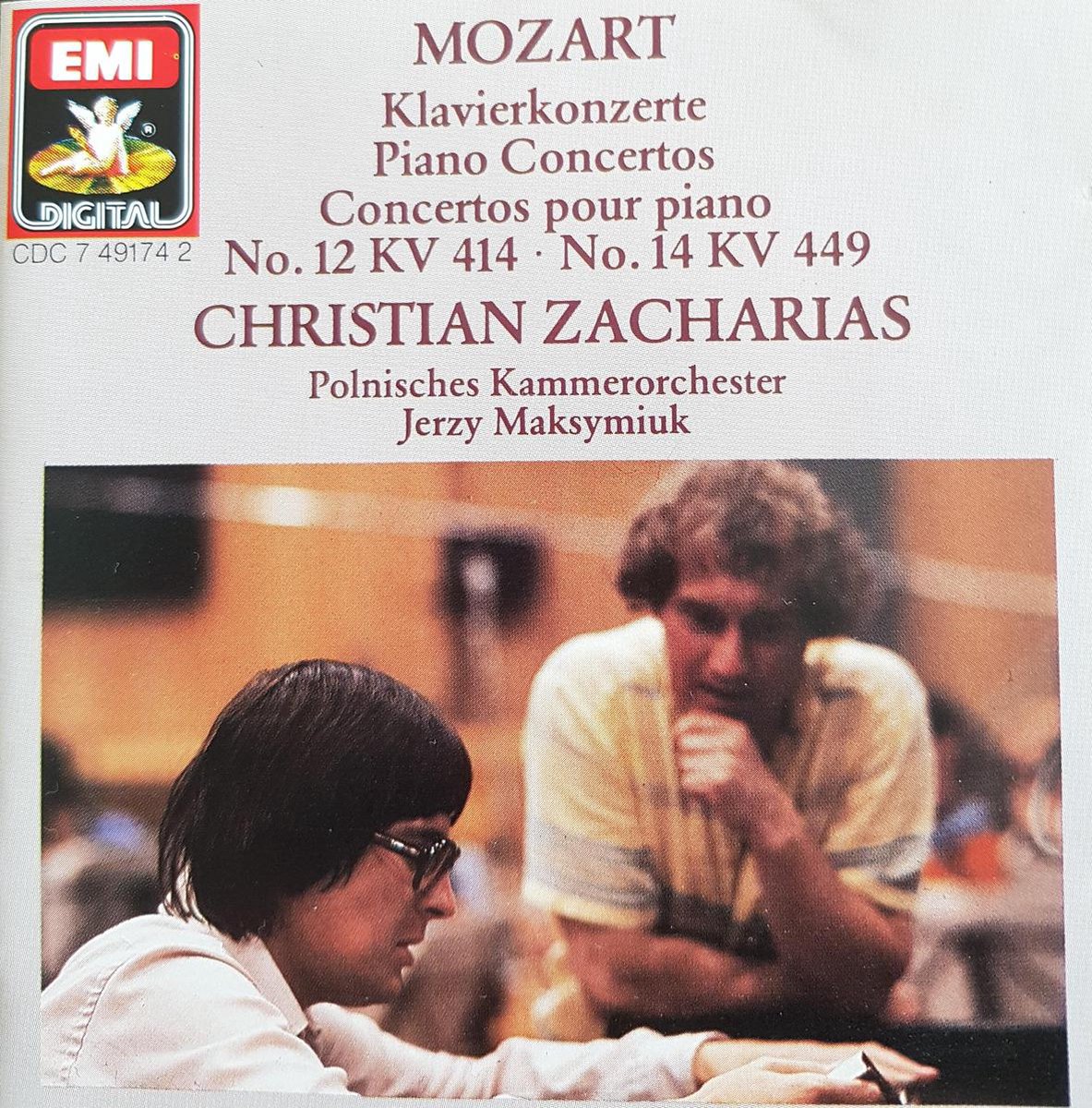Mozart: Piano Concerto 13, 14, & 15
In Piano Concerto no. 13 in C Major, Mozart brings out all of the winds, brass, plus timpani, reminding me of Haydn in a C Major state of mind. These instruments tend to accentuate the big moments, thus aren't all found in the middle movement to retain its poetry.
One of Mozart's effective techniques for building tension happens right away in the first movement, where a pedal point is sustained in the introduction. It is a simple effect, but works very well for this listener. The striking 5-6-7-1 idea returns with force throughout the opening too, and I like its appearance throughout.
The concluding movement's jaunts into minor a lot of fun, always interrupted by the major-keyed main idea, yet Mozart happily returns to the minor mode again and again.
It seems Mozart can't wait to get away from the E-flat Major key quickly enough in the opening of Piano Concerto no. 14. Not only does he drive away from the main key, he makes a violent turn to the minor mode and generally relishes B-flat Major more than the home key. Luckily, Zacharias digs into this aspect, making these turns auditory and not a mere commute home.
The final rondo movement is a favorite of mine. The opening violin theme, a rather upbeat, plucky musical idea, is one I love every time it returns, and a rather unassuming one as well. This just reminds me of how characterful Mozart can be with his finales, especially in relation to the previous movements, where soul-stirring is more in order.
Piano Concerto no. 15 in B-flat Major, with K449, are perhaps the first set of Mozart's piano concertos where I recognize his vision of time signatures as a structural and listener's progression for the whole. I think I recognized this fact when this concerto began in a typical 4/4, moved to 3/8 in the middle movement, only to land on a fun, heavily swinging 6/8 at its conclusion. K449 had a similar progressing metrical scale, although its start in 3/4 time moving to 2/4 at the center of the work was unusual as well.
The middle theme-and-variations movement is the shortest timing of any from Mozart in his piano concertos. I do not know if this is Zacharias plowing through the variations in spectacular form, or if this was just a short setting from Mozart. In any case, this is a fun concerto on the whole, with a lot of piano technique at the fore.
I generally think Christian Zacharias playing of the piano concertos works better as Mozart's music becomes more difficult, and so going forward, his performances are nothing less than excellent for this listener.
Zacharias' collaboration with David Zinman produced the best results of his piano concerto cycle, although as with K414, I sense a better result from Jerzy Maksymiuk and the Polish Chamber Orchestra here than I did with the rather harsh sounding, square playing ensemble in K246 & K271. Only in K415 do I believe Barenboim is preferred, but his outing with the Berlin Philharmonic, not the ECO.
Works
Piano Concerto 13 in C Major, K. 415 (25.11)
Piano Concerto 14 in E-flat Major, K. 449 (21.13)
Piano Concerto 15 in B-flat Major, K. 450 (23.07)
Soloists
Christian Zacharias, piano
Performers
Polish Chamber Orchestra
Jerzy Maksymiuk, conductor
English Chamber Orchestra
David Zinman, conductor
Label: EMI
Year: 1982-92
Piano Concerto 13 in C Major, K. 415 (25.11)
Piano Concerto 14 in E-flat Major, K. 449 (21.13)
Piano Concerto 15 in B-flat Major, K. 450 (23.07)
Soloists
Christian Zacharias, piano
Performers
Polish Chamber Orchestra
Jerzy Maksymiuk, conductor
English Chamber Orchestra
David Zinman, conductor
Label: EMI
Year: 1982-92
Find more Mozart recordings HERE!




Comments
Post a Comment